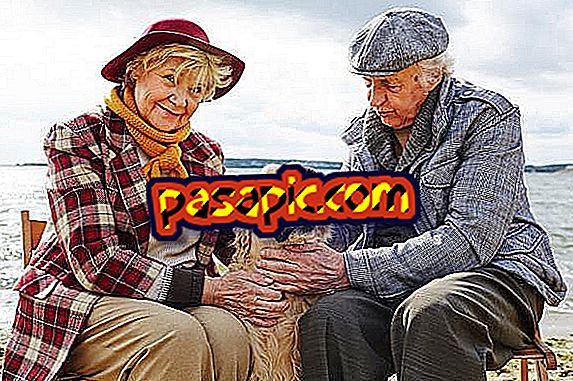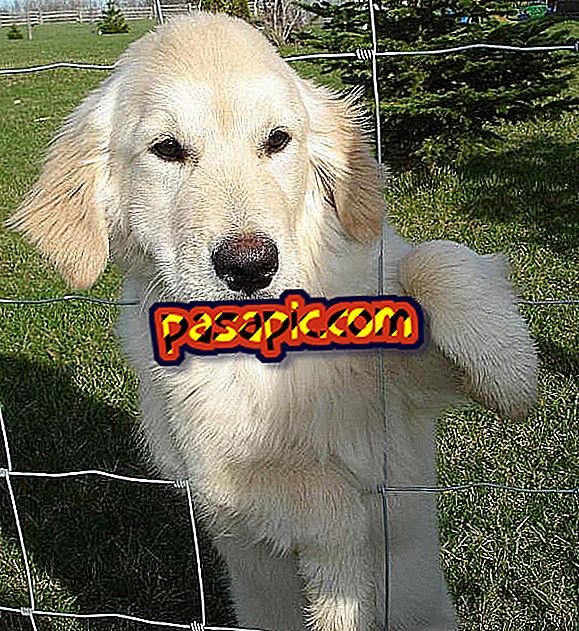How to educate a Czechoslovakian wolfhound

The Czechoslovakian wolfhound is one of the dog breeds that most resemble wolves and, for this reason, many people are struck by this type of dog to have it as a pet. But before you can live with one you have to be clear about some details of their character and needs. This breed owes its extraordinary beauty and charm to its origins, the crosses between the race of the German shepherd and the wolf of the Carpathians.
If you are really interested in hosting a dog of this interesting and relatively new breed, or if you already live with one of them, it is vital that you inform yourself about them. So, in this article we are going to tell you everything you need to know about how to educate a Czechoslovakian wolfhound so that, in this way, you can enjoy a balanced and happy companion who also enjoys living with you.
Characteristics of the Czechoslovakian wolfhound
The physical aspect of this race is practically the same as that of the wolves of the Carpathians. Thus, its coat is dense and of a color in gray tones, from a more yellowish tone or light brown to or even silver gray and, normally, they present a mottled mantle, with a mask of a lighter color on the face. They are a large breed weighing between 20 and 26 kg of adults .
Due to their genetic relationship with the wolves these dogs are very active, brave, somewhat reserved and curious . For all this, their reactions, both positive and negative, tend to be energetic, quick and sometimes impulsive. In addition, they are very loyal to your family so they will always be with you, but they will be rather distrustful of strangers.
In addition to that we may like for its appearance so close to the wolves, we must remember that it keeps some needs like those of their ancestors. For example, it is a can that is very energetic and is not suitable for beginners, but the most appropriate thing is to be an experienced owner to live with one or several of them without having problems or provoking them.

Is this breed suitable for you?
So, so you can know if you really have the ability to live with a dog of this breed, due to its high level of energy and some characteristic features of the dogs closely related to the wolves, here we explain some important points:
- You should not show your love and affection towards your pet by letting him do whatever he wants, that is, you should not have a relationship without limits. The rules and limits are essential in this relationship.
- Have had some dogs before and have managed to train a puppy or an adult and successfully, being the leader and making them happy, covering all their needs.
- Be able to meet the great need for daily exercise that this breed has.
- Be aware of all the real responsibilities involved in having an animal companion.
- Knowing when to reach a point in the relationship with your pet in which you should ask for help from a trainer or a canine etologist.

The importance of socialization
It is very important to socialize a dog and it is vital to do so when he is still a puppy, although this does not mean that it can not be done when they are adults. But in the case of this breed of dog, as it is a direct descendant of the wolves, it is normal that they have a capacity or a spectrum of socialization somewhat reduced compared to other breeds of dogs.
Since this breed has a very intense hunting impulse, it is essential to socialize them with other animals and with people from an early age, in order to avoid future problems. For your pet, and especially this breed, to have a good socialization it is very important to start at 2 months of age of the puppy and it is equally essential that these two months have been spent with their mother. It does not mean that we should remove him from his mother's side at that age, but he should get used to living with us, to see us, to our voice and to recognize some basic things like coming when you call him or biting with less force when you tell him to.
It is essential that you relate to other animals and people from a very young age, but we must make sure you know them beforehand so that they can be positive experiences and avoid negative reactions as these experiences will mark the character of your pet. If any negative experience of a young person leaves any mark on their way of being and relating, we may need the help of an expert to solve the problem.
In addition, we must remember that coming from the wolves in a very direct way, these dogs tend to be distrustful of strangers and avoid contacts that make them feel insecure, so we must select very well at the beginning of the different relationships and have a lot of patience.
Set rules and limits
Being responsible for any type of dog is vital to mark limits and rules to have a relationship as healthy as possible and make your pet happy, it is about finding a balance and the right way to make him understand things and not be an aggressive owner or who shouts for everything to be heard.
The most important thing in this phase to educate your hairy is that you have to be very consistent . For example, we can not forbid him to climb on the sofa if another person in the family constantly asks him to climb on it to be by his side. It is about the whole family agreeing on what things they can do and what others they can never do to get the message right and not confuse it, since in that case many problems could arise.
It is also crucial that between the norms we establish a pattern of schedules and routines both to go out for a walk and to eat, something that anybody needs to be balanced and happy.
Also, we recommend that both to teach new things and to correct the bad habits that you see that your hairy, you must use positive reinforcement and avoid negative responses and reactions on your part. That is to say, teaching with activities and positive and fun reactions is much more effective than teaching based on punishment and aggressiveness.
Therefore, when your hairy does something well congratulate or reward it, instead when you do something that you do not want to continue doing remove it calmly from the place where you are or ignore it completely and you see other things.

Required exercise for this breed
One of the most crucial things to get to know all the details about how to educate a Czechoslovak wolfhound is that having a high level of energy requires much more exercise time than a dog of other breeds needs. Therefore, if you have or will have a dog of this breed get ready because physical exercise is essential for the proper training of your pet.
The activity that most need these dogs are long walks in natural environments, where they can travel long distances and in freedom, but it is vital that you do not release it in open spaces until you have learned to respond when you call it. So, if you live far away from a natural area or do not have the possibility of doing this type of trips every day, a dog of this breed is not the best option for you, but if you can carry it out without problems, it will be a point in your favor to be able to live with one of these furry.
Also, to educate and train your pet the sessions in which you are teaching necessary things should be short. This is because they are dogs with a great capacity to learn but, having a great intelligence and memory, besides being very curious, they will get bored very easily and be distracted.
Therefore, the most effective are the short and entertaining sessions and not the long and repetitive ones. To do this you must arouse interest, that is, show that what you teach has an end, being able to feel useful in the family, and that has a positive end.
Basic and advanced orders
In addition to teaching your pet to socialize and meet some exercises to spend their energy, exercise and enjoy, you must also educate him to know some basic and advanced commands. Some of the easiest orders that you can learn while still a puppy are the following:
- Come here
- Sit down
- Lie down
- Still
- Walk beside you
This set of orders will help you feel more fulfilled and more balanced, but we must remember that we must ask you to do them with some purpose and congratulating you for doing it well or correcting it in an appropriate way.
On the other hand, other more advanced orders that you can teach your pet when you have learned the previous ones are the following:
- Bring
- Skip
- Spin around
- Follow
- Search for
- Release
This type of orders must be taught to a dog of this race, since due to their intelligence they soon need to learn different things. Also, remember that the orders should be taught with short and clear words and, above all, that they do not resemble your name to avoid confusion.



